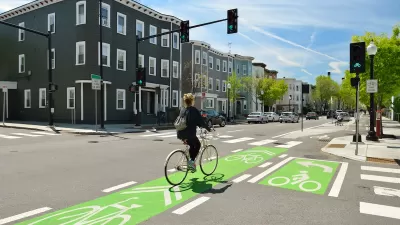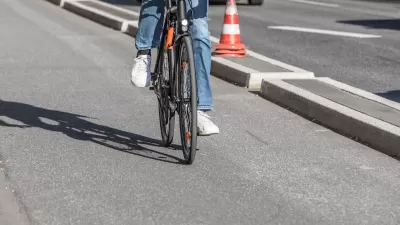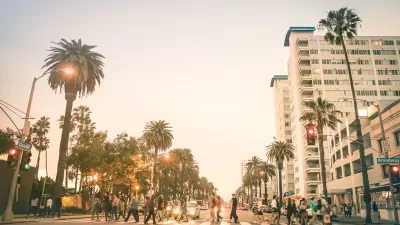A simple walk through your community can reveal infrastructure gaps and highlight where cities can make streets safer for pedestrians.

Safe streets advocates have a simple starting point for making change to pedestrian infrastructure in their cities: taking a walk. As Edward Erfurt notes in a piece for Strong Towns, any effort to improve road safety starts with an evaluation of current conditions.
“The Strong Towns Crash Analysis Studio has helped residents of cities across North America review serious crashes in their communities,” Erfurt writes. The analyses brought to light oversights (for example, yield signs installed at four-way intersections rather than stop signs) and improper uses of road infrastructure.
According to Erfurt, “There is nothing more memorable and impactful than experiencing our communities with each other on foot. Something as simple as a walk allows us to have a conversation informed by the existing conditions, as well as letting us illustrate items like the economic benefits of pedestrian-friendly designs to local officials.”
A “walking audit” can offer a new perspective on a community and illuminate infrastructure needs. “In addition to members of the design team and traffic safety officials, a good audit will include a cross section of the municipality’s experts in areas such as engineering, planning, maintenance and law enforcement. It will also include any individual in the area known to have a disability or particular struggle that will be impacted by the design.”
FULL STORY: Want To Create Change Quickly? Start by Taking a Walk.

Planetizen Federal Action Tracker
A weekly monitor of how Trump’s orders and actions are impacting planners and planning in America.

Congressman Proposes Bill to Rename DC Metro “Trump Train”
The Make Autorail Great Again Act would withhold federal funding to the system until the Washington Metropolitan Area Transit Authority (WMATA), rebrands as the Washington Metropolitan Authority for Greater Access (WMAGA).

The Simple Legislative Tool Transforming Vacant Downtowns
In California, Michigan and Georgia, an easy win is bringing dollars — and delight — back to city centers.

The States Losing Rural Delivery Rooms at an Alarming Pace
In some states, as few as 9% of rural hospitals still deliver babies. As a result, rising pre-term births, no adequate pre-term care and harrowing close calls are a growing reality.

The Small South Asian Republic Going all in on EVs
Thanks to one simple policy change less than five years ago, 65% of new cars in this Himalayan country are now electric.

DC Backpedals on Bike Lane Protection, Swaps Barriers for Paint
Citing aesthetic concerns, the city is removing the concrete barriers and flexposts that once separated Arizona Avenue cyclists from motor vehicles.
Urban Design for Planners 1: Software Tools
This six-course series explores essential urban design concepts using open source software and equips planners with the tools they need to participate fully in the urban design process.
Planning for Universal Design
Learn the tools for implementing Universal Design in planning regulations.
Smith Gee Studio
City of Charlotte
City of Camden Redevelopment Agency
City of Astoria
Transportation Research & Education Center (TREC) at Portland State University
US High Speed Rail Association
City of Camden Redevelopment Agency
Municipality of Princeton (NJ)





























